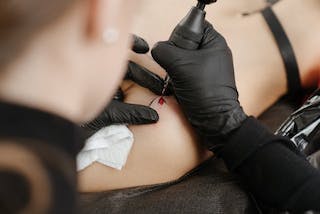Understanding Psoriasis Removal And Treatment Options
Psoriasis is a chronic autoimmune skin condition that leads to the rapid growth of skin cells, resulting in red, scaly patches that can appear anywhere on the body. While psoriasis is a lifelong condition, its symptoms can vary in severity, and with proper management, individuals can reduce flare-ups, control symptoms, and improve their overall quality of life. A common concern among individuals with psoriasis is the possibility of removing or alleviating these patches through effective treatments.
In this comprehensive guide, we will explore the various options for psoriasis removal, including medical treatments, home remedies, and lifestyle modifications. We will also discuss the underlying causes of psoriasis, what contributes to flare-ups, and how you can work with healthcare providers to manage your condition effectively.
Psoriasis
Psoriasis is an autoimmune condition where the body’s immune system mistakenly attacks healthy skin cells, leading to inflammation and the rapid production of new skin cells. These excess skin cells accumulate on the surface, forming thick, scaly patches. Psoriasis is not contagious and can affect individuals of all ages, though it most commonly appears in early adulthood.
There are several types of psoriasis, including:
-
- Plaque psoriasis: The most common form, characterised by red, inflamed skin with silver-white scales.
- Guttate psoriasis: Small, drop-shaped patches that often appear on the trunk, arms, or legs.
- Inverse psoriasis: Smooth, red patches that appear in skin folds like the armpits, groin, or under the breasts.
- Pustular psoriasis: Characterised by white pustules surrounded by red skin.
- Erythrodermic psoriasis: A rare but severe form of psoriasis that leads to widespread redness and shedding of skin in large sheets.
- Nail psoriasis: Affects the nails, causing pitting, discolouration, or thickening of the nail plate.
Psoriasis is a chronic condition with no known cure. However, various treatments can help remove or reduce the appearance of psoriasis plaques, manage symptoms, and keep the disease under control.
What causes psoriasis?
While the exact cause of psoriasis is not fully understood, it is believed to be related to both genetic and environmental factors. In individuals with a genetic predisposition, the immune system becomes overactive and triggers inflammation in the skin, leading to the rapid turnover of skin cells.
Some common factors that can trigger or worsen psoriasis include:
-
- Genetics: A family history of psoriasis increases the likelihood of developing the condition. Specific genes have been linked to psoriasis, though the exact genetic mechanisms are still being studied.
- Immune system dysfunction: Psoriasis is classified as an autoimmune disease, meaning the immune system attacks healthy skin cells.
- Environmental triggers: Stress, infections, certain medications, and injury to the skin can trigger flare-ups.
- Climate: Cold, dry weather can exacerbate psoriasis, while warm, sunny climates may have a therapeutic effect.
- Diet: While no specific foods are proven to cause psoriasis, certain dietary factors, such as alcohol consumption and eating highly inflammatory foods, may contribute to flare-ups.
Treatment options for psoriasis removal
While psoriasis cannot be permanently removed, there are several treatment options available to help control the symptoms, reduce inflammation, and promote skin healing. These treatments aim to slow the growth of skin cells, ease inflammation, and remove scales.
1) Topical treatments
Topical treatments are the initial line of defence for managing psoriasis and are typically effective for individuals with mild to moderate psoriasis. These treatments are applied directly to the skin and can help control symptoms, remove scales, and promote skin healing. Common topical treatments include:
Corticosteroids
Topical corticosteroids are the most widely prescribed treatment for psoriasis. These anti-inflammatory medications help to reduce swelling, redness, and itching associated with psoriasis. They work by suppressing the overactive immune response that leads to skin cell production.
Corticosteroids come in various strengths, from mild to potent, and should be used under the guidance of a healthcare provider to avoid potential side effects such as thinning skin.
Vitamin D analogs
Vitamin D analogs, such as calcipotriene, are commonly used to treat psoriasis. These treatments help slow down the rapid growth of skin cells, which is one of the primary causes of psoriasis. They are often used in combination with corticosteroids for better results.
Topical retinoids
Topical retinoids, such as tazarotene, are derived from Vitamin A and help normalize skin cell growth. They can be effective in reducing inflammation and scaling, though they may cause skin irritation, especially when first used.
Coal tar
Coal tar has been used for centuries to treat psoriasis. It helps reduce inflammation, scaling, and itching. Coal tar can be applied as a cream, ointment, or shampoo, though it has a strong odour and can stain clothing.
Calcineurin inhibitors
Calcineurin inhibitors, such as tacrolimus and pimecrolimus, are non-steroidal medications that help reduce inflammation and suppress the immune response in the skin. These are particularly useful for treating psoriasis in sensitive areas, such as the face or genital region.
2) Phototherapy
Phototherapy is a popular treatment for psoriasis, particularly for individuals with moderate to severe cases. It involves exposing the skin to ultraviolet light under controlled conditions. There are two main types of phototherapy used for psoriasis:
Narrowband UVB therapy
Narrowband UVB therapy uses a specific wavelength of UVB light that has been shown to be effective in treating psoriasis. It slows down the growth of skin cells and reduces inflammation. This treatment requires several sessions per week, with gradual improvements over time.
PUVA therapy
PUVA therapy involves taking a medication that makes the skin more sensitive to light, followed by exposure to UVA light. PUVA therapy can be effective for more widespread psoriasis but is usually reserved for severe cases due to the risk of side effects such as skin aging and an increased risk of skin cancer.
Phototherapy is generally administered in a clinic, although home phototherapy units are available for some individuals with less severe cases.
3) Systemic treatments
For moderate to severe psoriasis, systemic treatments may be required. These medications work throughout the body to suppress the immune system, reduce inflammation, and control the rapid turnover of skin cells.
Oral medications
-
-
-
-
-
- Methotrexate: Methotrexate is a commonly prescribed systemic medication for severe psoriasis. It works by suppressing the immune system and reducing the production of skin cells.
- Cyclosporine: Cyclosporine is an immunosuppressant medication that helps control severe psoriasis by reducing inflammation and inhibiting immune system activity.
- Acitretin: A retinoid that helps reduce skin cell turnover and is often used in combination with other treatments. It is generally used for more severe cases.
-
-
-
-
Biologics
Biologics are a newer class of medications that target specific parts of the immune system responsible for psoriasis. These medications are administered by injection or intravenous infusion and are typically reserved for individuals with moderate to severe psoriasis who do not respond to other treatments.
Common biologics for psoriasis include:
-
-
-
-
- TNF-alpha inhibitors: Such as adalimumab, etanercept, and infliximab.
- IL-17 inhibitors: Such as secukinumab and ixekizumab
- IL-23 inhibitors: Such as guselkumab and tildrakizumab
-
-
-
Biologics can provide significant relief for many people with severe psoriasis and have fewer long-term side effects than traditional systemic medications.
4) Alternative and complementary therapies
In addition to conventional medical treatments, several alternative therapies and lifestyle changes can help manage psoriasis symptoms and promote skin healing.
-
-
-
- Dietary changes: Though there is no specific psoriasis diet, some individuals find relief by avoiding certain foods that may trigger inflammation, such as gluten, dairy, or processed foods. Anti-inflammatory foods, such as fatty fish, leafy greens, and fruits, may help reduce symptoms.
- Moisturising and skin care: Regular moisturizing is essential for individuals with psoriasis to prevent dryness and itching. Thick emollient creams, ointments, and oils can help lock in moisture and reduce scaling. Bathing with colloidal oatmeal or using a gentle soap can also soothe irritated skin.
- Herbal remedies: Some herbal remedies, such as aloe vera, turmeric, and tea tree oil, have been shown to have anti-inflammatory properties and may help soothe the skin. However, these should be used with caution, as some herbal products can cause irritation or allergic reactions.
-
-
5) Surgical and cosmetic options
In rare cases, when psoriasis affects the nails or causes severe disfigurement, surgical procedures like skin grafts or dermabrasion may be considered. These procedures are only recommended for specific cases and after other treatments have failed.
Cosmetic camouflage products, such as specialised makeup, can help individuals with psoriasis cover visible patches, offering psychological relief and improving self-esteem.
Final thoughts
While psoriasis cannot be removed in the traditional sense, various treatments and management strategies can significantly reduce the appearance of psoriasis, control flare-ups, and improve quality of life. Early intervention and consistent care are key to managing this chronic condition and ensuring the best possible outcome. With the right approach, many people with psoriasis can lead healthy, fulfilling lives despite the challenges posed by the condition.



